Inks
The basic ingredient of the black ink used is carbon, usually soot collected from the bottom of cooking pots or from kerosene lamps. To act as a binder roasted grains of maize, barley, or finger millet are infused in a small amount of water before the liquid is decanted off and added to the soot.
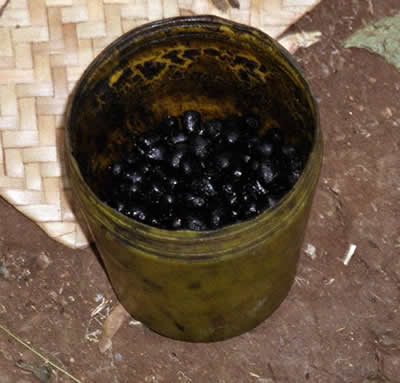 |
Roasted maize used in making binder Qés Fenti Mehret, Gelawdiwos, December 2000 |
The juice of the fruit from certain Solanum species is often incorporated into the mixture at this point as it is a natural insecticide and keeps flies away.
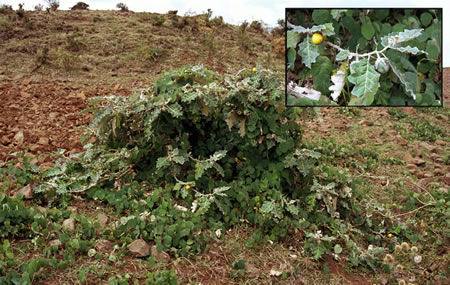 |
Solanum bush; inset, fruit used as insecticide Isté, April 2001 |
These ingredients are mixed on a grindstone or stirred in a pot each day for a period of perhaps several months. Eventually a skin forms on the top of the mixture and this layer is skimmed off and dried into blocks.
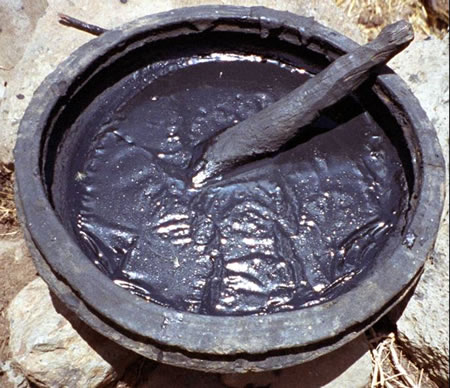 |
Layer of ink forming on top of mixture Melake Yibabe Abeje Laqew, Gota Kidane Mihiret, April 2001 |
This dried ink is stable for many years and small amounts can be mixed with water in an inkhorn to give liquid black ink whenever required.
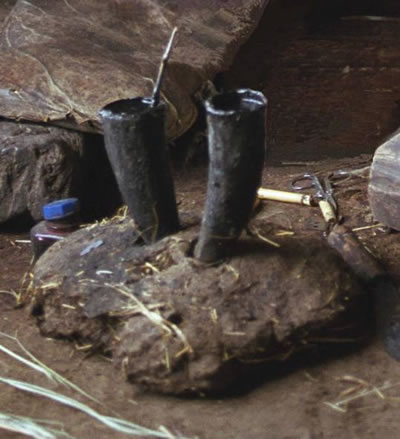 |
Ink stand with two black ink horns and commercial red ink Merigita Fenti Indelew, Debre Kera Maryam, April 2001 |
Red ink is normally only used to write the names of God, Christ, Mary, and Saints and Martyrs. It was traditionally prepared from natural ingredients such as red flowers and red soils but very few scribes do this today. Usually commercial red ink is bought and then mixed with a binder such as acacia gum to thicken it.
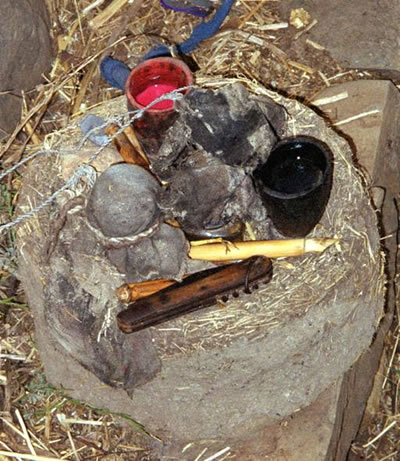 |
Ink stand with natural red ink Qés Yohanis Melese Dubale, Gono Gebriel, April 2001 |
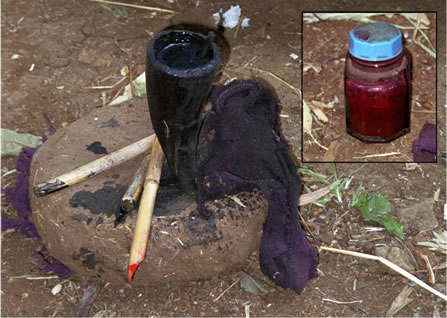 |
Ink stand; inset, bottle of commercial red ink Qés Fenti Mehret, Gelawdiwos, December 2000 |